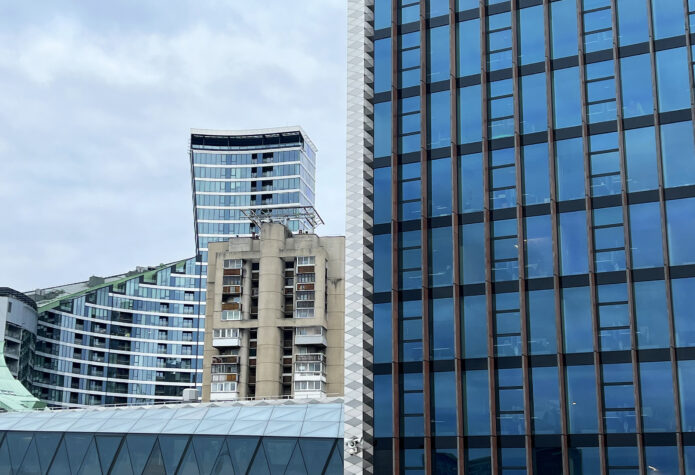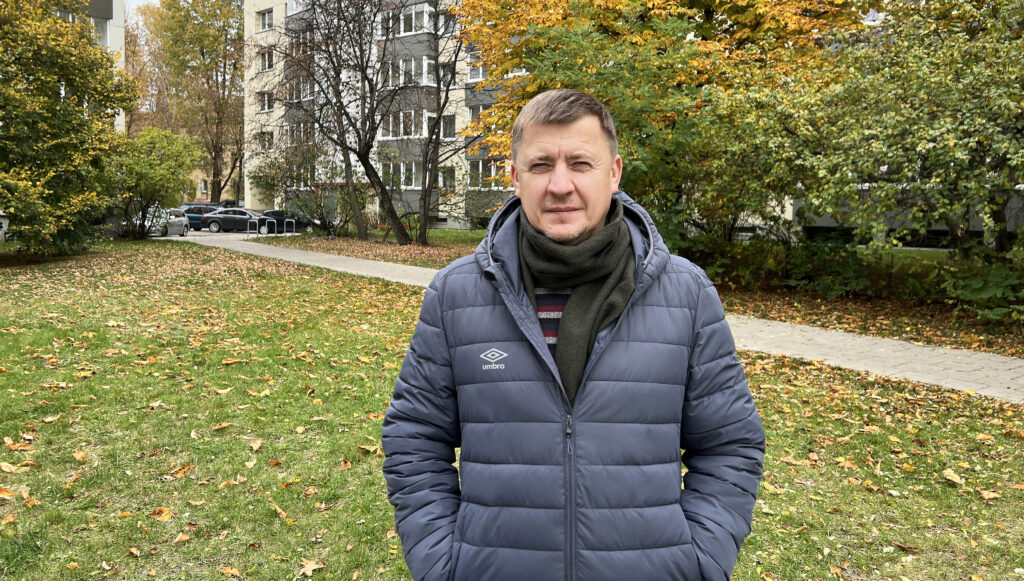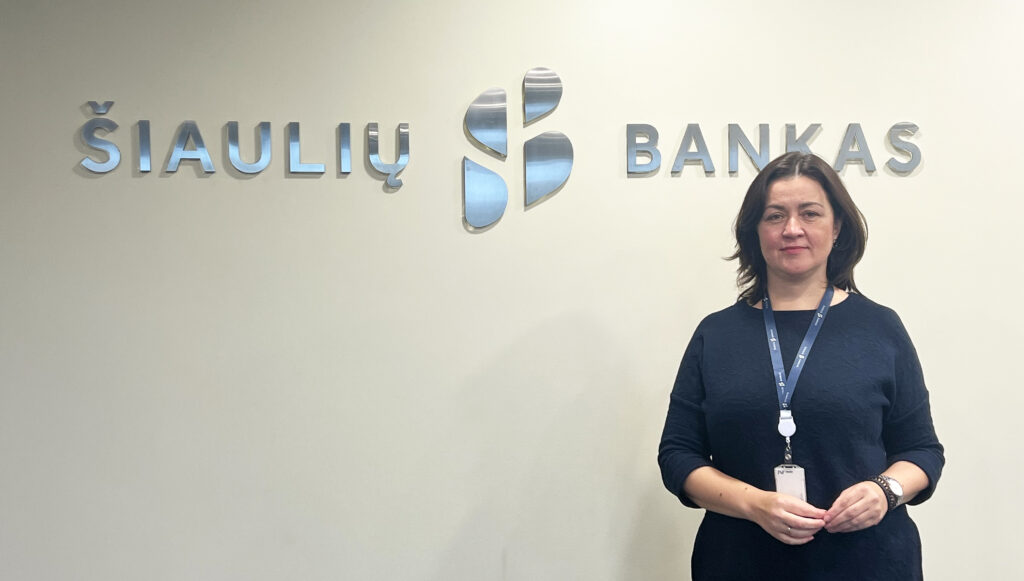Lower heating bills to tackle climate change in Lithuania

Responsible for around 40% of the total energy consumption in Europe, buildings are both a problem for and the solution to climate change. In Lithuania, where ageing Soviet-era apartment blocks make up the majority of the housing stock, they hold an enormous untapped potential. As surging energy prices and climate targets urge the upgrading of its old buildings, NIB is financing Lithuania’s housing renovation programme to speed up the process.
Lina and Donatas Burneikai have been living in their current apartment in Vilnius for eight years. Having moved away to start their family, they have returned to the place where they used to spend their student days. The building was not the same as when they first left – it has undergone a thorough refurbishment inside and out.
“Of course, the renovation played a big part in our moving back here – the upgraded facade, the windows and even the yard – all these details make it more pleasant to come inside,” says Lina Burneikienė, who was working from home when we met. Her employer decided to work fully remotely on Thursdays and Fridays to reduce energy consumption at their premises in light of the energy crisis.
According to Lina, the building is well accommodated for this work setup. “One of the biggest improvements of the renovation was better insulation, which makes the apartment warmer during the winter and cooler during the hot summer days.”
Her husband, Donatas Burneika, agrees. “The benefits are simple: it’s cosier, more comfortable, and slightly cheaper. Although the energy bills did not dramatically decrease, the renovation has expanded the living space through balcony insulation and glazing as well as made it more suitable for the changing climate.”

Donatas Burneika, a resident of a renovated apartment, says the refurbishment has also activated the community for further improvements such as renewing the staircase, replacing the elevator and other upgrades that “makes living in this previously gloomy Soviet-built block much brighter”.
Burneikai say that compared to some old construction in Lithuania, their apartment was already quite energy-efficient before the renovation. However, they do know of cases where a timely renovation resulted in energy savings of up to 70%.
Benefiting homeowners and the environment
Indeed, such savings are common – the Lithuanian Environmental Projects Management Agency (EPMA) has calculated that the completed renovation projects have helped reduce energy consumption by an average of 64.4% in the country.
While lower bills remain the catalyst for renovation, more and more homeowners appreciate the additional benefits that come with it. “A recent public opinion survey shows that the main motives to participate in the renovation programme are the reduction of heating prices (92%), improvements in quality of life (74%) and a comfortable air temperature in the apartment (72%),” explains Gintarė Burbienė, Head of the Building Energy Conservation Department at EPMA.
So far, more than 100,000 people in Lithuania enjoy living in newly renovated apartments. Yet there is still a long way to go. “There are about 38,000 apartment buildings in Lithuania, housing more than half the country’s population. Most of these buildings were constructed before 1993 and are energy-inefficient,” says Gintarė Burbienė.
Lithuania’s long-term renovation strategy has the ambitious target of transforming the existing building stock by 2050. It includes reducing primary energy consumption by 60%, as well as eliminating the associated CO2 emissions to mitigate climate change.
Given that the refurbishment of a single multi-apartment building can cost up to EUR 500,000, such an aim may sound unrealistic for the country’s limited public finances. Luckily, there are ways to attract additional capital to multiply each euro invested.
Leveraging the costs
In May this year, Šiaulių Bankas launched a EUR 275 million “SB Modernisation Fund” to finance the renovation of up to 600 apartment buildings in Lithuania. NIB is a senior creditor for the Fund with a EUR 50 million loan.
“The Fund allows us to leverage public money by mobilising private investors, increasing Lithuania’s funding for renovation projects fivefold,” says Goda Butkienė, Director of Financial Services Development Department at Šiaulių Bankas, the country’s leading renovation financier, with more than 2,500 buildings already financed.

According to her, the participation of NIB and other international financial institutions (IFIs) is key to the Fund’s success.
“First of all, because of their know-how. We had a considerable input from the IFIs – from asking the right questions, to providing expertise on the legal basis and securitisation – they helped shape the whole financial structure.”
“Then, of course, there’s pricing. To offer the best price for both the state and the residents, it is crucial to find investors with competitive terms, which then translates into the final price for the customers.”
“Finally, the cooperation between the IFIs. The more of them we have on board, the more attractive the project becomes. Their participation gives a stamp of quality that also attracts other investors,” says Goda Butkienė.
There is no stopping here
By the end of November, the Fund has already signed over 70 EUR million in credit agreements for 127 new renovation projects. With this demand, there will soon be a need for another Fund of similar structure.
“The current pipeline already has refurbishment projects worth some EUR 200 million in the coming years. So as soon as we launch a financing platform, we start to think about the next one,” explains Goda Butkienė, adding that although the renovations are going smoothly, there is a need to ramp up the capacities across different sectors.
To this day, only around 11% of the country’s old houses have been refurbished, with around 300 renovation projects completed each year. At this rate, it would take more than a hundred years to fully replace Lithuania’s ageing housing stock.
According to EPMA, there are plans to both accelerate the renovation and make it more ambitious. “At the end of this year and 2023 alone, there will be new calls for proposals for the renovation of nearly 3,000 buildings,” says Gintarė Burbienė.
“Moreover, as the benefits of an individual building renovation are usually felt only by the owners of the refurbished buildings, we need to gradually move to the implementation of complex energy-saving measures, which would significantly reduce the needs of energy production, supply and consumption,” she explains.
Whether this involves cluster renovations of entire neighbourhoods, mass procurements or higher requirements for energy use, more funding will be needed. As Lithuania is tapping into its energy efficiency potential, NIB stands ready to assist.

